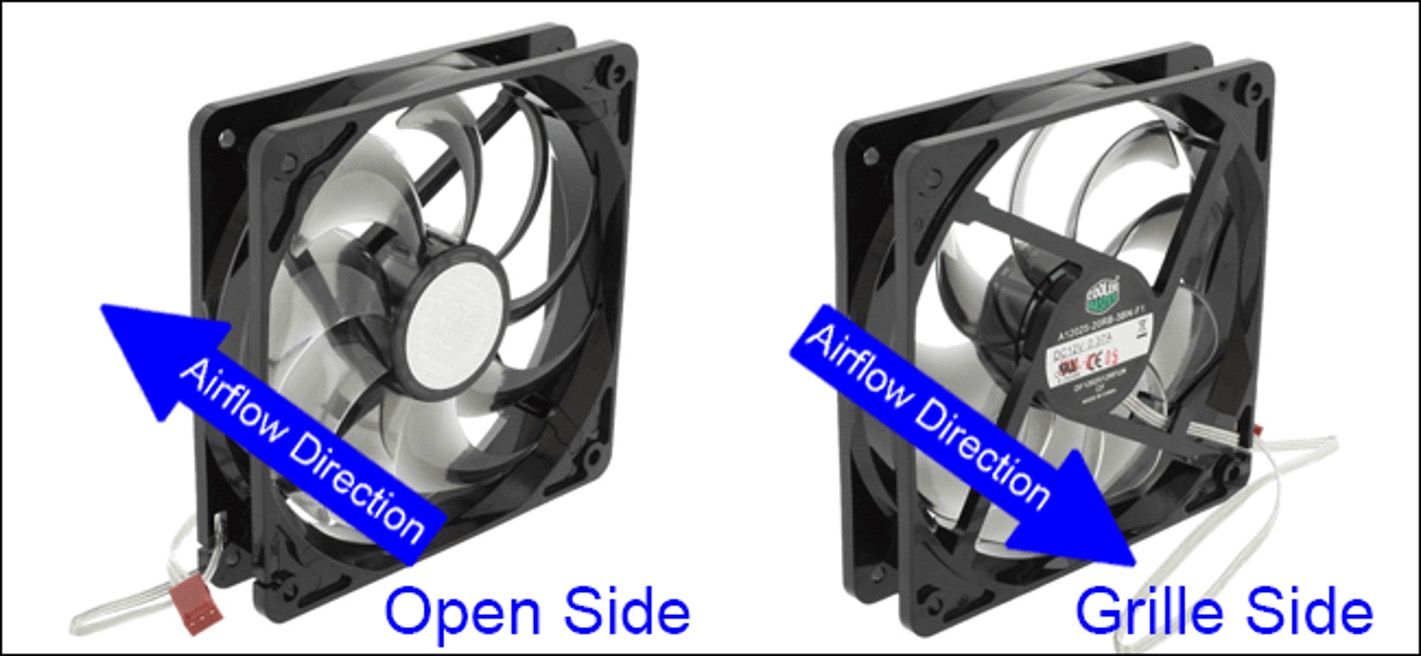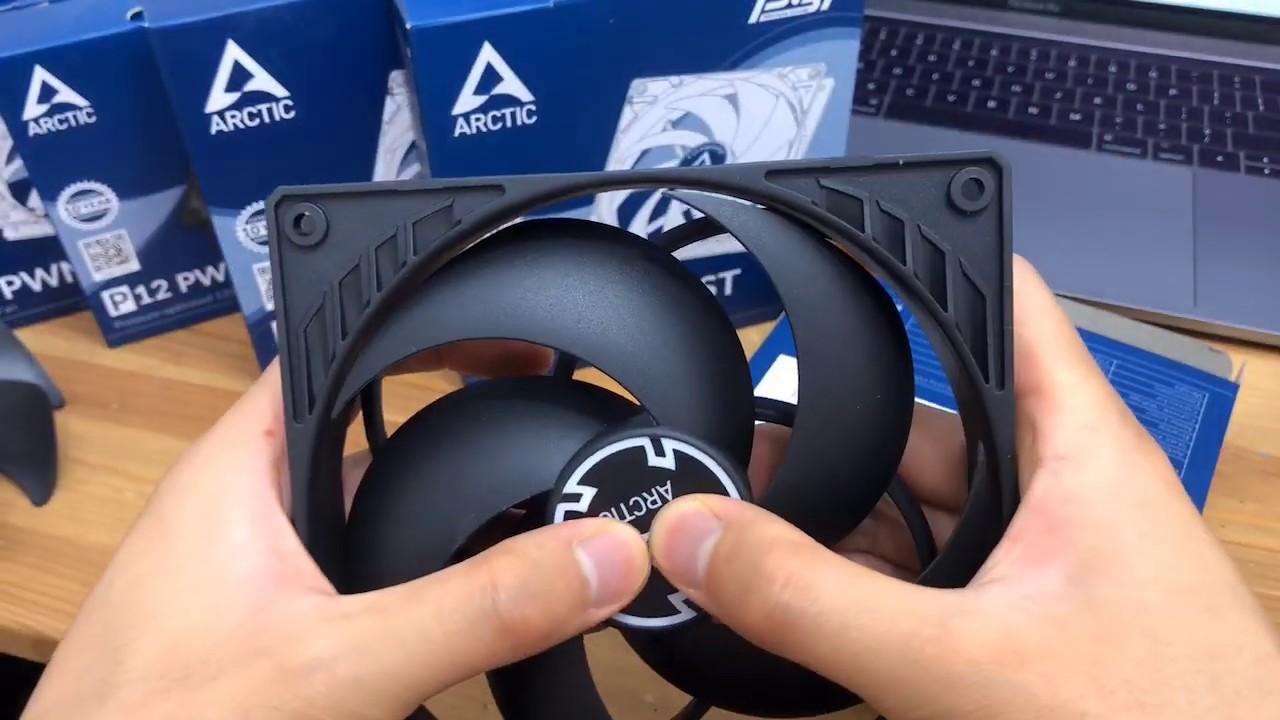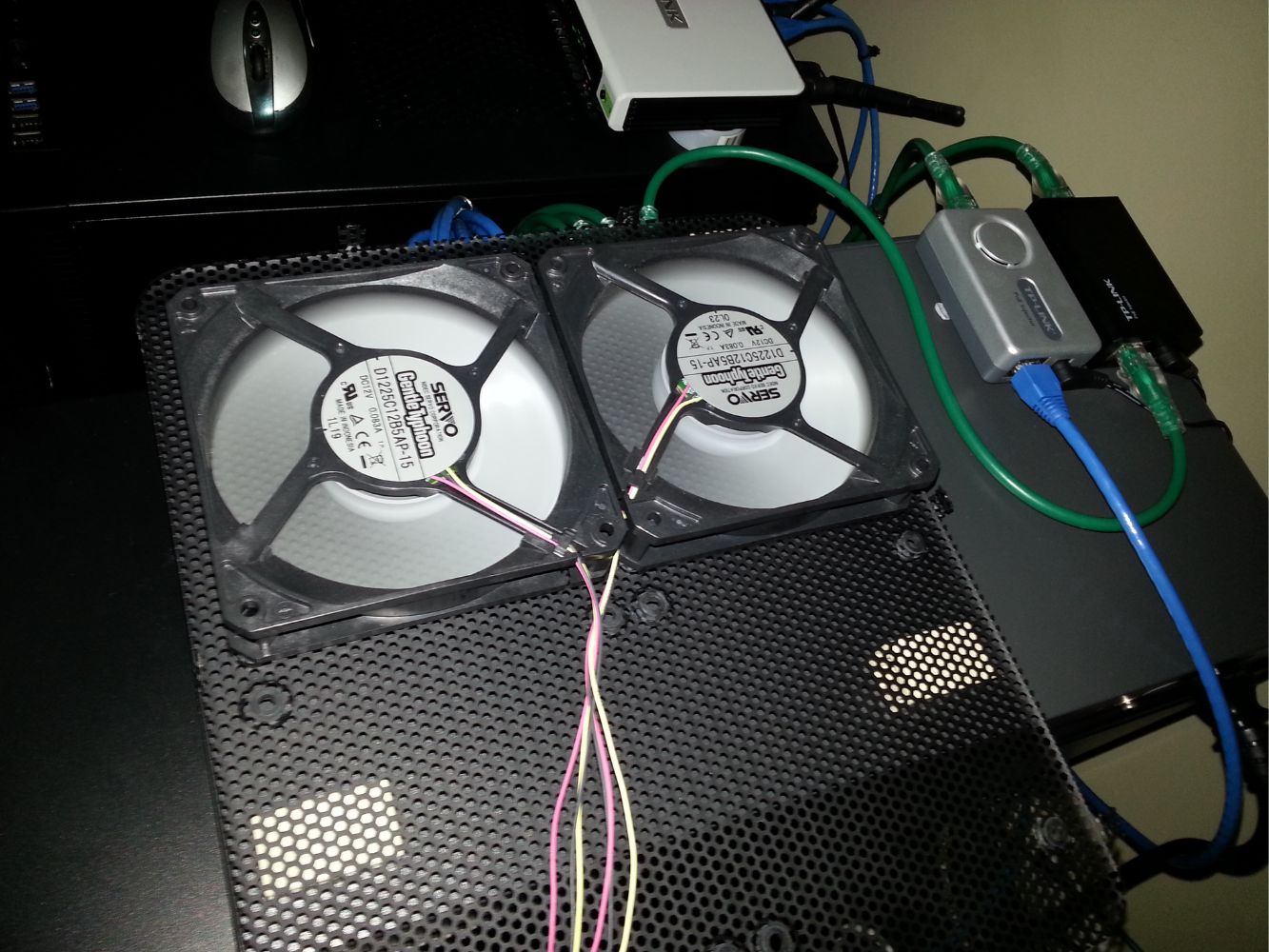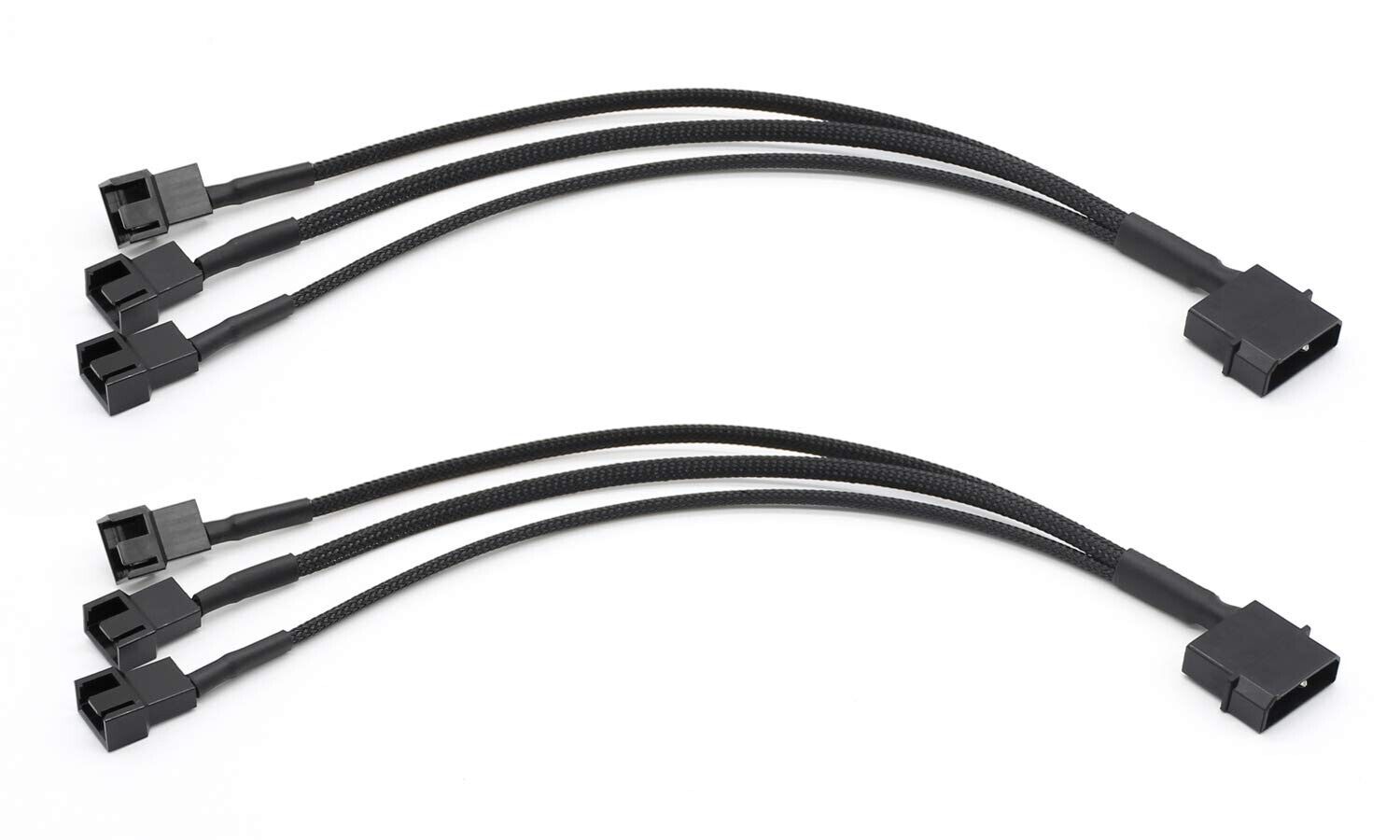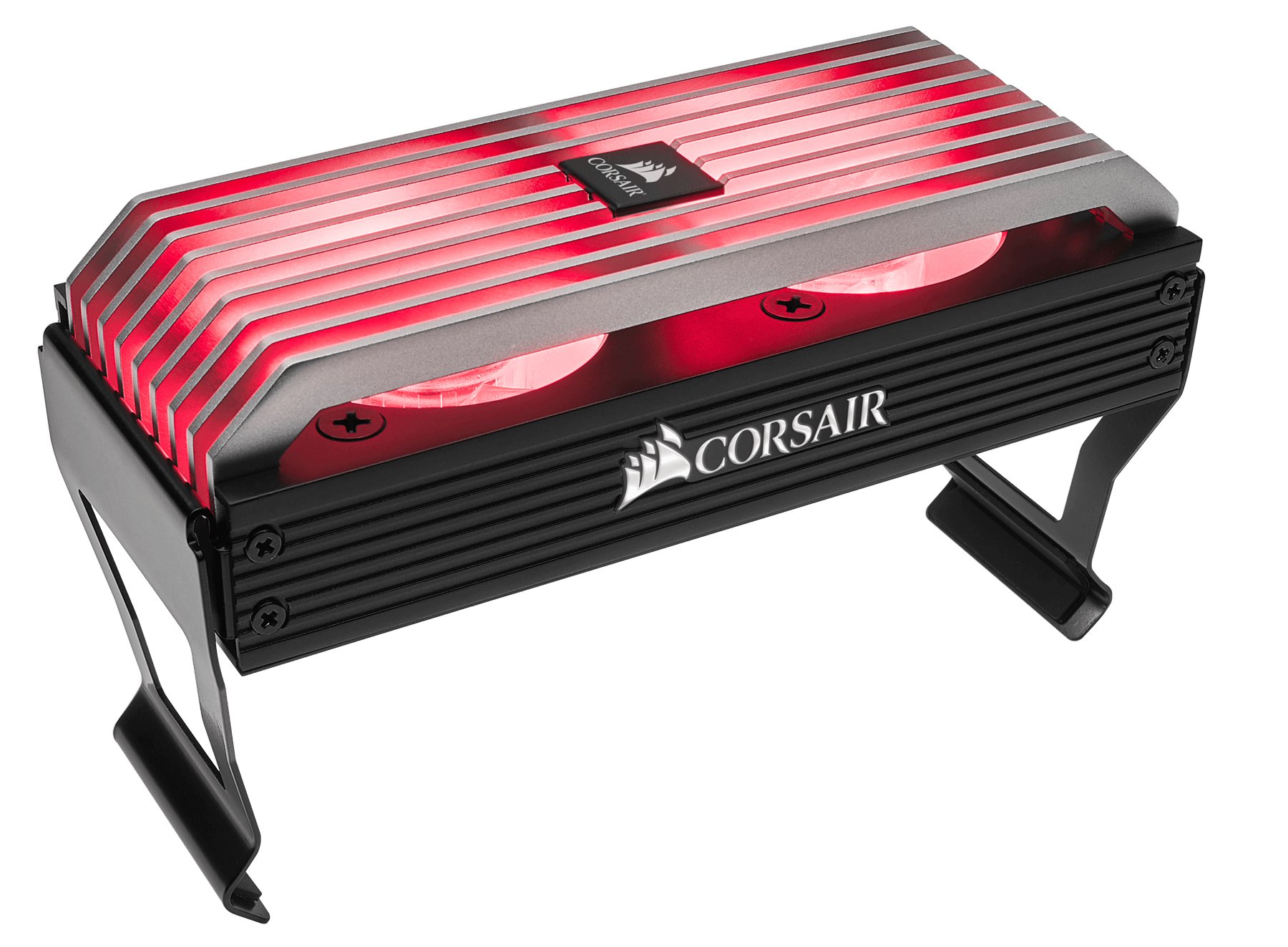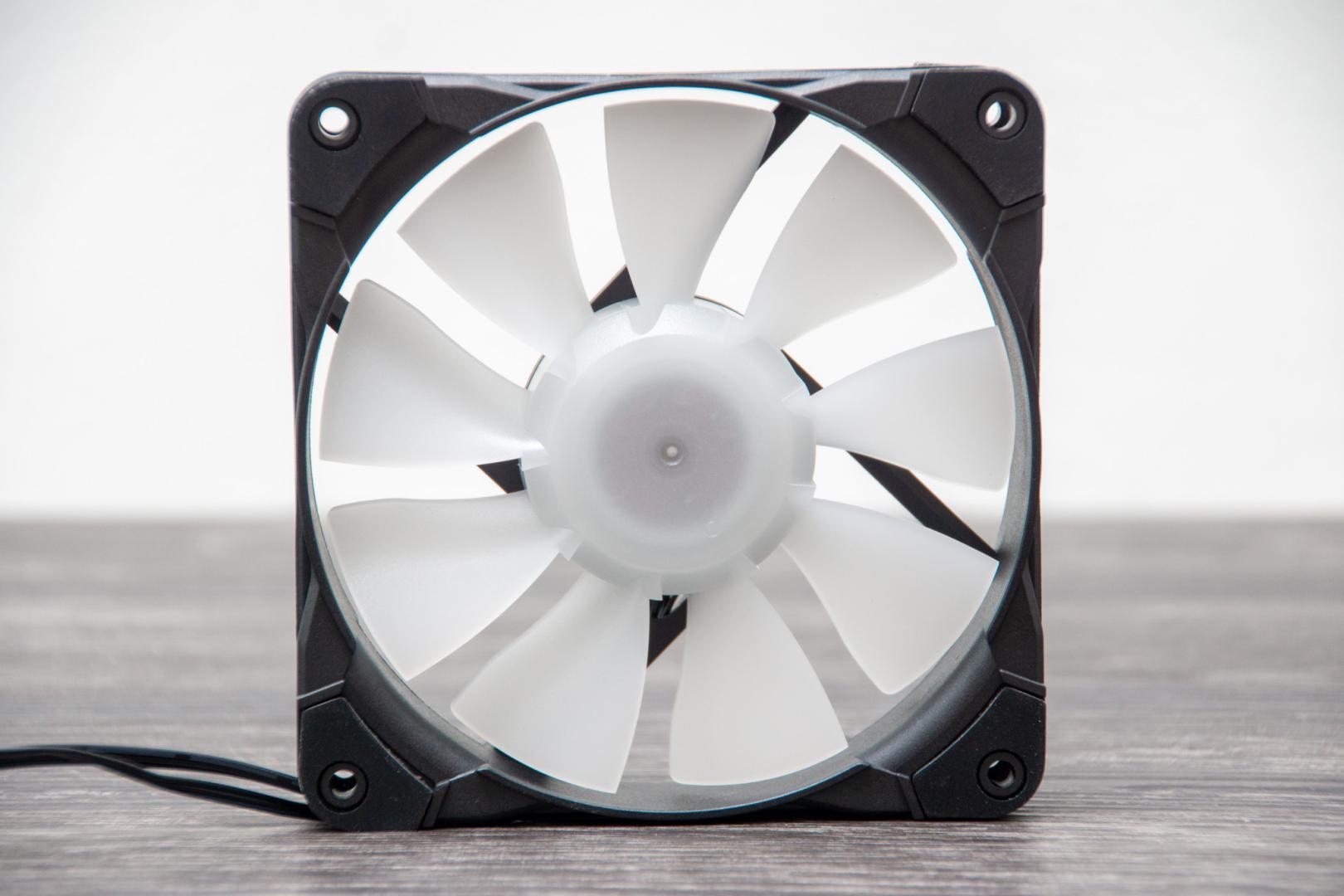Introduction
Welcome to the world of computer cooling, where maintaining proper airflow is crucial for keeping your components running at optimal temperatures. One key element of an efficient cooling system is the direction of airflow generated by case fans. Understanding the airflow direction is important for several reasons, including ensuring that hot air is effectively expelled from the case and cool air is efficiently drawn in.
Case fans play a vital role in dissipating heat generated by the processor, graphics card, and other components inside your computer. They work by creating airflow, which helps to regulate the temperature inside the case. By strategically placing fans in specific locations, you can ensure that cool air is brought in, heat is removed, and the overall system temperature is kept within safe limits.
However, not all case fans blow air in the same direction. Some fans are designed to expel hot air out of the case, while others are meant to draw cool air in. To optimize the cooling performance and maintain positive air pressure inside the case, it is important to understand the specific airflow direction of each fan.
In this article, we will explore various methods to determine the airflow direction of case fans. Whether you are building a new computer or troubleshooting an existing setup, knowing the airflow direction will help you ensure that your cooling system is working as intended.
Why is airflow direction important?
The direction of airflow generated by case fans is of utmost importance for maintaining proper cooling in a computer system. A well-designed airflow pattern ensures that hot air is efficiently expelled from the case, while cool air is drawn in to keep the components at optimal operating temperatures.
When the airflow direction is incorrect, it can lead to several problems. Firstly, if the hot air is not effectively expelled from the case, it can cause a buildup of heat, leading to higher component temperatures. This can result in reduced performance, potential system instability, and even permanent damage to sensitive components such as the CPU or graphics card.
On the other hand, if the airflow direction is not aligned to draw cool air in, the system may not receive adequate cooling. This can result in increased temperatures, especially during demanding tasks such as gaming or video editing, and can lead to thermal throttling, where the performance of the components is automatically scaled back to protect them from overheating.
In addition to temperature regulation, airflow direction also plays a role in maintaining positive air pressure inside the case. Positive air pressure occurs when more air is being brought into the case than expelled. This helps to prevent dust and debris from entering through unfiltered gaps and improves the overall longevity of the components and cooling system.
Proper airflow direction also aids in efficiently directing the airflow over critical components, such as the CPU and GPU. By effectively channeling the airflow, these components receive the necessary cooling to prevent them from reaching peak temperatures and potentially throttling their performance.
Overall, the correct airflow direction is vital for system stability, component longevity, and optimal performance. By understanding and ensuring the proper airflow direction within your computer case, you can prevent overheating issues, improve system reliability, and protect your valuable hardware investment.
How do case fans work?
Case fans are essential components in a computer system that help regulate and maintain optimal temperatures for its various components. These fans work by circulating the air inside the case, creating a continuous flow that allows for heat dissipation.
The basic principle behind the operation of case fans is simple. They consist of a rotating hub with blades attached to it. The hub is connected to a motor that spins the blades at a high speed, creating airflow. As the blades rotate, they push the surrounding air in a specific direction, either expelling hot air out of the case or drawing in cool air.
Most case fans operate using a 3-pin or 4-pin connector, which provides power and control signals to the fan. The power is supplied through the connector, allowing the fan motor to spin the blades. The control signals, usually sent through the fourth pin in a 4-pin fan, adjust the fan speed, allowing for variable control of airflow and noise levels.
The size of case fans varies, with common sizes being 80mm, 120mm, and 140mm. Larger fans generally provide higher airflow rates while operating at lower speeds, resulting in quieter operation. However, the suitability of each fan size depends on individual case specifications and cooling requirements.
By strategically positioning case fans inside the case, you can establish an effective airflow pattern. This typically involves placing intake fans at the front or sides of the case to draw in cool air, and exhaust fans at the rear or top of the case to expel hot air. This setup facilitates the proper flow of air through the case, allowing for efficient heat exchange and temperature regulation.
In addition to the standard case fans, there are also specialized fans designed for specific purposes, such as CPU coolers and graphics card coolers. These fans often have unique designs and configurations that optimize airflow over the targeted component, providing enhanced cooling performance.
Overall, case fans play a crucial role in maintaining the temperature equilibrium within a computer system. By creating airflow and directing it in the right direction, these fans help prevent overheating and ensure the longevity and stable operation of the components.
Is there a standard airflow direction for case fans?
While there is no universal standard for the airflow direction of case fans, there are some common practices and conventions followed by manufacturers. The choice of airflow direction ultimately depends on the design of the case and the cooling needs of the components.
Traditionally, case fans are categorized into two types: intake fans and exhaust fans. Intake fans are designed to draw cool air into the case, while exhaust fans expel hot air from the case. In most setups, there is a combination of both intake and exhaust fans to establish a balanced airflow pattern.
The specific airflow direction of a case fan can usually be determined by inspecting the manufacturer’s specifications or by observing the fan blades and the fan’s casing. The manufacturer often indicates the intended airflow direction in the fan’s product description or user manual. It is important to note that not all fans may have explicit markings or labels indicating the airflow direction, especially in budget or generic fan models.
When no markings are present, you can usually determine the airflow direction by examining the fan blades. The blades are shaped to push air in a specific direction. The side of the blades that appears curved or angled facing downwards is typically the side from which the air is pushed. This indicates the direction of the airflow, either as an intake or exhaust fan.
In some cases, you can also assess the airflow direction by feeling the airflow while the fan is running. Place your hand near the fan and see if you can feel air being blown towards you or away from you. This can help you determine whether the fan is set up as an intake or exhaust fan.
Alternatively, you can use a smoke source or tissue paper to visualize the airflow direction. By holding the smoke source or tissue paper near the fan, you can observe how the air moves in response. The direction in which the smoke or tissue paper is pushed or displaced will indicate the airflow direction of the fan.
It is worth noting that the specific airflow direction of a case fan can vary depending on factors such as the fan’s manufacturer, model, and intended usage. Therefore, it is always advisable to consult the manufacturer’s specifications or documentation to ensure accurate information regarding the airflow direction of a particular case fan.
How to determine the airflow direction of a case fan
Determining the airflow direction of a case fan is essential for optimizing the cooling performance of your computer system. While manufacturer specifications and markings may provide clear indications, in some cases, you may need to rely on other methods to determine the airflow direction. Here are some ways to determine the airflow direction of a case fan:
1. Checking the manufacturer’s specifications: The easiest way to determine the airflow direction of a case fan is to consult the manufacturer’s specifications. These specifications are usually available on the product packaging, the manufacturer’s website, or the user manual. Look for specific information or labels indicating whether the fan is an intake or exhaust fan.
2. Observing the fan blades: Another method is to closely inspect the fan blades. The curvature and shape of the blades can provide clues about the direction of airflow. The side of the blades that appears curved or angled facing downwards is typically the side that pushes the air. This indicates whether the fan is set up as an intake or exhaust fan.
3. Feeling the airflow: While the fan is running, place your hand near the fan and observe the airflow. If you feel air being blown towards you, it indicates that the fan is set up as an intake fan, drawing air into the case. Conversely, if you feel air being blown away from you, it suggests that the fan is an exhaust fan, expelling air from the case.
4. Using smoke or tissue paper: Another effective method is to use a smoke source or tissue paper to visualize the airflow. Hold the smoke source or tissue paper near the fan and observe how the air moves in response. If the smoke or tissue paper is blown away from the fan, it indicates that the fan is an exhaust fan. Alternatively, if the smoke or tissue paper is drawn towards the fan, it suggests that the fan is an intake fan.
By utilizing these methods, you can confidently determine the airflow direction of a case fan. This knowledge will help you position the fan correctly within your system, ensuring that the airflow is optimized, and the cooling performance is efficient. Remember to consult the manufacturer’s specifications whenever possible to obtain accurate information about the fan’s airflow direction.
Checking the manufacturer’s specifications
One of the most reliable ways to determine the airflow direction of a case fan is by checking the manufacturer’s specifications. When you purchase a case fan, the manufacturer provides detailed information about its design, features, and airflow orientation. By consulting the manufacturer’s specifications, you can obtain accurate and reliable information regarding the intended airflow direction of the fan.
Manufacturer specifications can usually be found on the product packaging, the manufacturer’s website, or in the user manual. Look for specific labels or indications that clearly state whether the fan is intended to be used as an intake or exhaust fan. It may be explicitly mentioned as “intake fan” or “exhaust fan,” or there may be directional arrows indicating the desired airflow direction.
When inspecting the manufacturer’s specifications, pay attention to any additional details provided. Some manufacturers may include airflow rate information, such as the cubic feet per minute (CFM) or liters per second (L/s) measurement, which can give you an idea of the fan’s performance. This information can help you make informed decisions when positioning the fan within your case for optimal cooling.
It is important to note that not all fans may have explicit markings or labels indicating the airflow direction, especially in budget or generic fan models. In such cases, it becomes even more crucial to rely on other methods, such as observing the fan blades or feeling the airflow, to determine the direction of airflow.
By referencing the manufacturer’s specifications, you can ensure that you have accurate information regarding the airflow direction of the case fan. By positioning the fan correctly according to these specifications, you can optimize the cooling performance of your computer system and maintain ideal temperatures for your components.
Observing the fan blades
Another effective method to determine the airflow direction of a case fan is by closely observing the fan blades. Fan blades are specifically designed to create airflow in a particular direction, and their shape can provide valuable clues about the intended airflow orientation.
When examining the fan blades, pay attention to their curvature and angle. Study the shape of the blades and look for any asymmetry or noticeable features. Typically, the side of the blades that appears curved or angled facing downwards is the side that pushes the air. This indicates the direction of the airflow.
If you notice that one side of the blades is flatter or less angled compared to the other side, it suggests that this flatter side is facing towards the direction from which the air is drawn. In this case, the fan is likely an intake fan, designed to bring cool air into the case. On the other hand, if the side of the blades that appears curved or angled is facing towards the direction where the air is pushed, it indicates that the fan is an exhaust fan, meant to expel hot air from the case.
It is important to note that some case fans may have symmetrical blades, making it more difficult to determine the airflow direction based solely on visual observation. If you encounter such a fan, it is recommended to refer to other methods, such as checking the manufacturer’s specifications or feeling the airflow, to accurately determine the airflow direction.
Observing the fan blades can provide a quick and reliable way to identify the airflow direction of a case fan. By understanding the design and orientation of the fan blades, you can position the fan correctly within your system to ensure optimal airflow and efficient cooling for your components.
Feeling the airflow
Another practical method to determine the airflow direction of a case fan is by physically feeling the airflow while the fan is running. This method allows you to sense the direction in which the air is being pushed or pulled by the fan, providing a clear indication of the airflow direction.
To feel the airflow, place your hand near the fan while it is in operation. Pay attention to the direction in which the air is moving in relation to your hand. By observing the airflow pattern, you can discern whether the fan is an intake fan or an exhaust fan.
If you feel a noticeable stream of air being blown towards you, it indicates that the fan is set up as an intake fan. In this case, the fan is drawing cool air into the case. On the other hand, if you feel the air being blown away from you, it suggests that the fan is an exhaust fan, expelling hot air from the case.
It is important to note that the airflow might not always be strong or easily felt, particularly with smaller or low-speed fans. However, even a subtle airflow can provide enough indication to determine the direction in which the fan is pushing or pulling air.
This method is particularly useful when other indicators, such as manufacturer specifications or visible markings on the fan, are unavailable or unclear. By simply feeling the airflow, you can confidently determine the airflow direction without the need for additional tools or equipment.
Feeling the airflow offers a straightforward and intuitive way to ascertain the airflow direction of a case fan. By correctly identifying the direction in which the air is being expelled or drawn in, you can ensure proper positioning and maximizing the cooling efficiency of your computer system.
Using smoke or tissue paper
An effective method to visually determine the airflow direction of a case fan is by using smoke or tissue paper. By observing the movement or displacement of smoke or tissue paper in response to the fan’s airflow, you can accurately identify whether the fan is an intake or exhaust fan.
To use this method, you will need a source of smoke, such as incense or a matchstick, or a lightweight tissue paper. Here’s how you can proceed:
1. Using smoke: Light the incense or matchstick and hold it near the fan. If the smoke is blown away from the fan, it indicates that the fan is an exhaust fan, expelling air from the case. Conversely, if the smoke is drawn towards the fan, it suggests that the fan is an intake fan, pulling air into the case.
2. Using tissue paper: Tear a small piece of lightweight tissue paper and hold it near the fan blades. Observe how the paper reacts to the airflow. If the tissue paper is blown away from the fan, it indicates that the fan is an exhaust fan. On the other hand, if the tissue paper is drawn towards the fan, it suggests that the fan is an intake fan.
The principle behind this method is that the airflow generated by the fan will cause movement or displacement of the smoke or tissue paper towards the direction of the fan’s airflow. This visual cue allows you to accurately determine the airflow direction even if there are no visible markings or indicators on the fan itself.
Using smoke or tissue paper is a simple yet effective technique to confirm the airflow direction of a case fan. By employing this method, you can ensure that the fan is positioned correctly within your computer system, facilitating optimal cooling and maintaining the desired airflow for efficient heat dissipation.
Common airflow directions for case fans
While there is no universal standard for the airflow direction of case fans, there are some common practices and conventions followed by manufacturers. Understanding these common airflow directions can help you make informed decisions when setting up your computer system for optimal cooling.
1. Intake fans: Intake fans are designed to draw cool air into the case. They are usually positioned at the front or sides of the case, where they can bring in fresh outside air. By directing cool air towards the components, intake fans help to maintain lower temperatures and assist in cooling the CPU, GPU, and other demanding components.
2. Exhaust fans: Exhaust fans are responsible for expelling hot air from the case. Typically placed at the rear or top of the case, these fans help to eliminate trapped hot air and ensure efficient heat dissipation. By removing hot air, exhaust fans contribute to maintaining low overall system temperatures and preventing hotspots within the case.
3. Push-pull configuration: In setups with multiple fans, it is common to have a combination of intake and exhaust fans working together. This push-pull configuration helps to establish a continuous flow of air, with some fans drawing in cool air while others expel the hot air. This configuration enhances the overall cooling efficiency and promotes better airflow throughout the case.
4. Radiator or CPU cooler fans: In liquid cooling systems, fans are often used in conjunction with radiators or CPU coolers. The airflow direction for these fans depends on the specific setup and the design of the cooling solution. Typically, these fans work as intake fans, drawing cool air through the radiator or CPU cooler to dissipate the heat generated by the liquid cooling system.
Remember that the specific airflow directions for case fans can vary based on factors such as the case design, fan installation options, and cooling requirements. It is important to consult the manufacturer’s specifications and recommendations for your specific case and fan models to ensure that you align the fans correctly for proper airflow.
By understanding the common airflow directions for case fans, you can plan and implement an efficient cooling setup that promotes better heat dissipation, keeps temperatures in check, and contributes to the overall stability and performance of your computer system.
Conclusion
Understanding the airflow direction of case fans is crucial for maintaining optimal cooling in your computer system. By ensuring the correct airflow direction, you can effectively expel hot air, draw in cool air, and create a balanced airflow pattern that promotes efficient heat dissipation and temperature regulation.
In this article, we explored various methods to determine the airflow direction of case fans. Checking the manufacturer’s specifications provides accurate information and is the most reliable method when available. Observing the fan blades can also give insights into the intended airflow direction, based on their curvature and angle. Feeling the airflow and using smoke or tissue paper offer practical and visual cues to help determine the airflow direction even in the absence of clear markings.
While there is no universal standard for the airflow direction of case fans, there are common trends followed by manufacturers. Intake fans bring in cool air, while exhaust fans expel hot air. Combining intake and exhaust fans in a push-pull configuration helps establish a continuous airflow pattern. Additionally, fan configurations in liquid cooling systems depend on the design and setup of the cooling solution.
Remember to consult the manufacturer’s specifications and recommendations for your specific case and fan models to ensure that you correctly align the fans for optimal cooling performance.
By paying attention to the airflow direction and implementing a well-designed cooling system, you can safeguard your components from overheating, enhance system stability, and prolong the lifespan of your computer. Achieving the right airflow direction is a key aspect of maintaining a well-cooled and efficient computer system.







